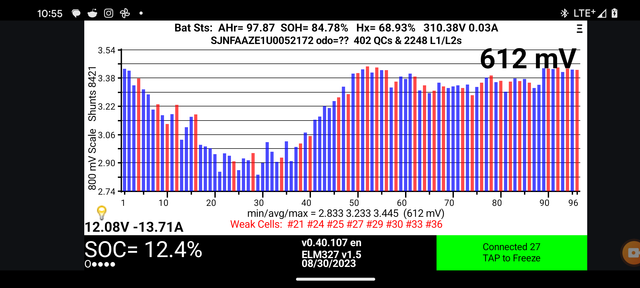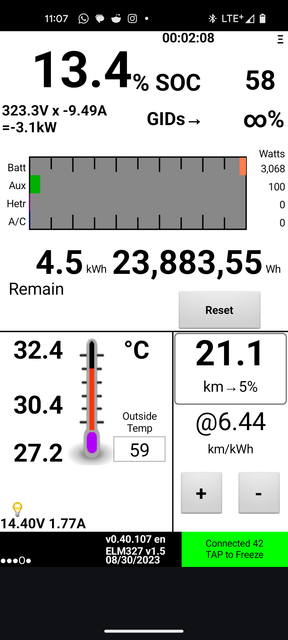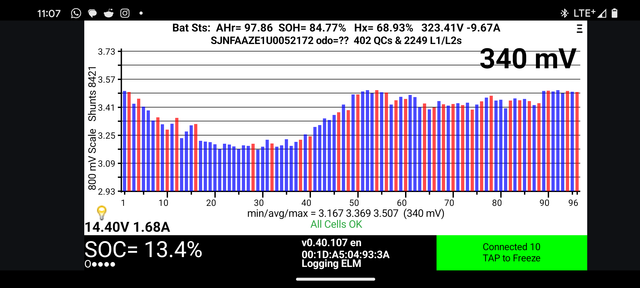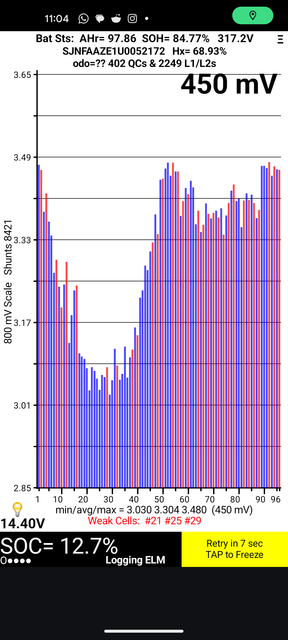Oostenrijker
Well-known member
- Joined
- Jul 19, 2023
- Messages
- 122

Finished testing the battery: Turtle Mode came around 12.4% SoC and I managed to still drive to the public charging station. So I'm definitely not able to use the total left capacity of my battery pack.

Currently I'm charging, I plugged in 10mins ago and still had about 4kWh left when Turtle Mode turned on. However I have not been able to produce any DTC, despite the difference in voltage reaching up to 612mV before Turtle Mode triggered.
So the dealership has agreed into checking the health of the battery, during the recall. What would be a good strategy? Drop the car off with 0% dash SoC? Because now I know, how far I can run it down actually.

This is while charging: is it because of the balancing that happens during charging? Because where as first I had the "weak cells" message, now I have all cells okay message.
Yes I floored the pedal more frequently down then I would do usually: and I saw one time the dash SoC drop from 50% to 45% while accelerated hard. And after that it got back to 48% dash SoC.

Leafspy actually didn't show me any weak cells, until I parked the car. But checking it a second time, I now only had three weak cells. So I muss conclude, that even though my worry would be valid. It seems less severe when I only still see three weak cell's?
But I guess, I better drop the car around the SoC that these would show up: else this whole battery test, has no meaning to do.



